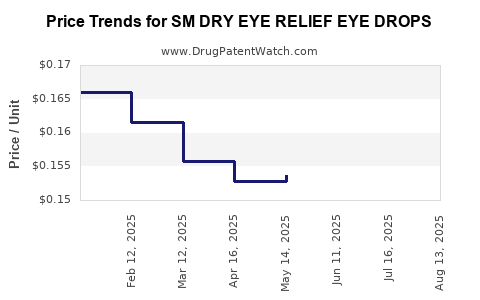Drug Price Trends for SM DRY EYE RELIEF EYE DROPS
✉ Email this page to a colleague

Average Pharmacy Cost for SM DRY EYE RELIEF EYE DROPS
| Drug Name | NDC | Price/Unit ($) | Unit | Date |
|---|---|---|---|---|
| SM DRY EYE RELIEF EYE DROPS | 49348-0095-29 | 0.16950 | ML | 2024-11-20 |
| SM DRY EYE RELIEF EYE DROPS | 49348-0095-29 | 0.16950 | ML | 2024-10-23 |
| SM DRY EYE RELIEF EYE DROPS | 49348-0095-29 | 0.16867 | ML | 2024-09-18 |
| SM DRY EYE RELIEF EYE DROPS | 49348-0095-29 | 0.16867 | ML | 2024-08-21 |
| SM DRY EYE RELIEF EYE DROPS | 49348-0095-29 | 0.16627 | ML | 2024-04-17 |
| SM DRY EYE RELIEF EYE DROPS | 49348-0095-29 | 0.15967 | ML | 2023-12-20 |
| >Drug Name | >NDC | >Price/Unit ($) | >Unit | >Date |


